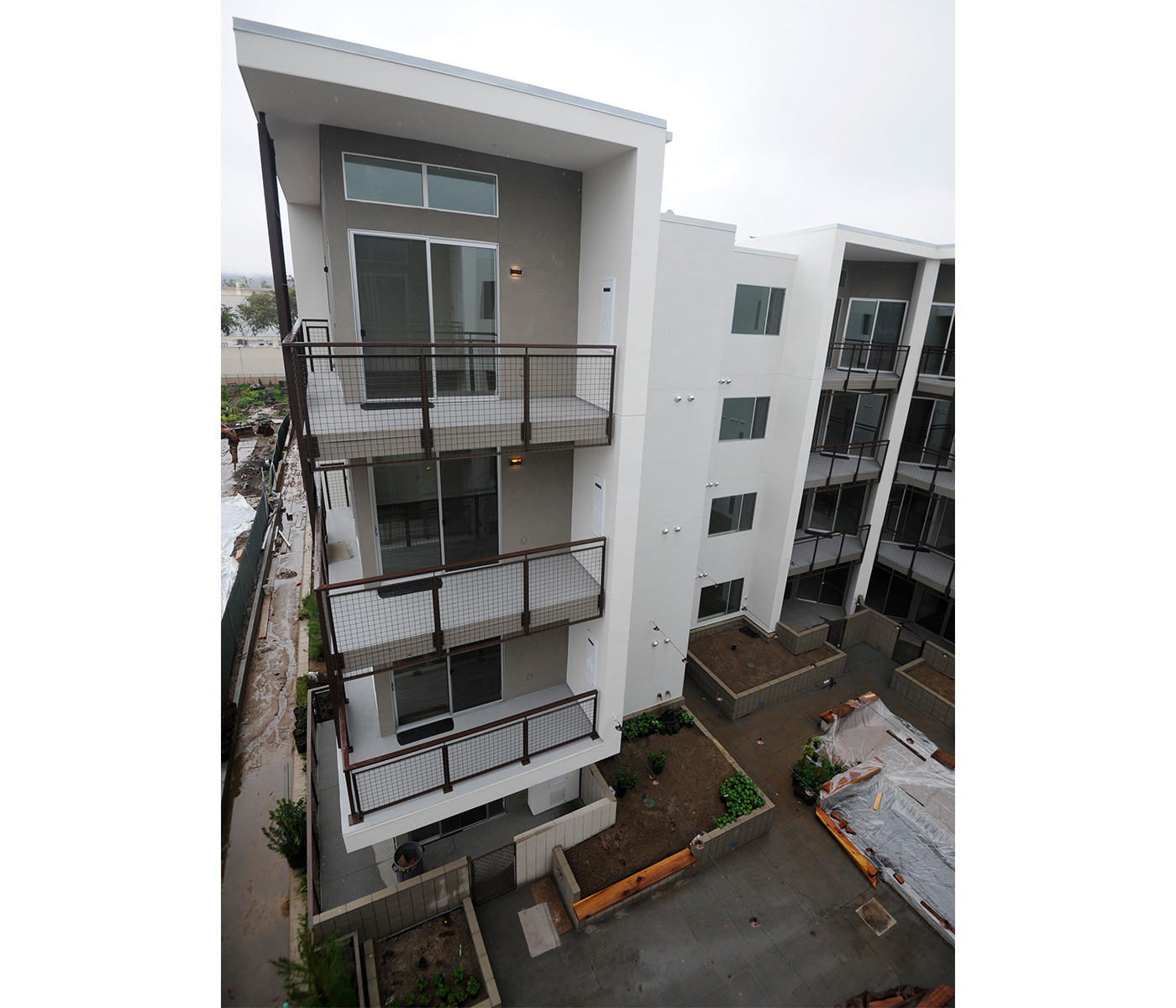Santa Barbara Squeezing In Affordable Housing
Officials Recommend at Least 10 Percent of High-Density Developments Target ‘Moderate’-Income Renters

A special housing task force is recommending that affordability requirements be imposed on new rental housing projects developed in accordance with the City of Santa Barbara’s much-debated AUD (Average Unit-Size Density) program, designed to encourage developers to build smaller, more affordable rental units by relaxing parking requirements and offering density bonuses. An ad hoc committee of city councilmembers and planning commissioners agreed that new AUD developments be required to make at least 10 percent of the units affordable to those on “moderate” incomes.
This summer, Governor Jerry Brown signed a bill allowing local governments to impose such requirements, known in planning lingo as “inclusionary housing” requirements. Before that, courts had ruled such requirements violated the letter of California’s law governing rent control. Critics of the AUD program have complained that the increased densities have not translated into the production of affordable units. Supporters have expressed concern the new requirements may weaken the economic viability of such development. Consultants hired by City Hall concluded that the 10 percent requirement would still leave developers enough return on their investments to be profitable.
The ad hoc committee also recommended increasing the amount of parking required for AUDs; two-bedroom units will now have to provide 1.5 spaces as opposed to just one. Three bedrooms will require two. None of these recommendations have gone before the City Council as yet, and it remains to be seen what a majority of councilmembers will think about such hot-button wonky issues. Housing density proved a divisive issue in the most recent elections.
The consultant also concluded that every 100 units of new housing generates a demand for 25 additional housing units to provide shelter for the employees — mostly low-income service workers — needed to meet the needs of the occupants of the new units. To date, six AUD projects have been built and occupied; combined, they compose 116 units. Most of those — 90 — are at The Marc on State by La Cumbre, the subject of much critical commentary for its high prices and swanky millennial flair. Close to another 60 projects — and 1,200 units of housing — are in the development pipeline.



